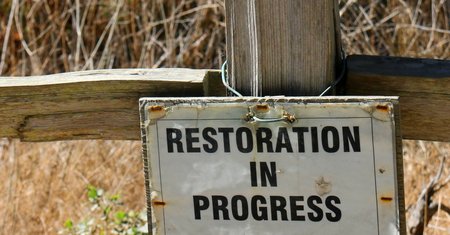The second book of Chronicles, in chapter 28 describes the reign of King Ahaz in Judah. He became “increasingly unfaithful to the Lord” (vs. 22). He sacrificed to idols and desecrated the temple. In so doing, he “provoked to anger the Lord God of his fathers” (vs. 25).
When Ahaz died, his son Hezekiah reigned in his place. Hezekiah was a good man, and immediately sought to restore God to His rightful place in Judah. Consider a portion of the chronicler’s record:
“In the first year of his reign, in the first month, he opened the doors of the house of the Lord and repaired them. Then he brought in the priests and the Levites, and gathered them in the East Square, and said to them: ‘Hear me, Levites! Now sanctify yourselves, sanctify the house of the Lord God of your fathers, and carry out the rubbish from the holy place. For our fathers have trespassed and done evil in the eyes of the Lord our God; they have forsaken Him, have turned their faces away from the dwelling place of the Lord, and turned their backs on Him’” (29:3-6).
Hezekiah recognized the apostasy of Judah under the influence of his father. He determined to right the wrongs his father had done, and return Judah to God’s good graces. He said to the Levites, “Now it is in my heart to make a covenant with the Lord God of Israel, that His fierce wrath may turn away from us. My sons, do not be negligent now, for the Lord has chosen you to stand before Him, to serve Him, and that you should minister to Him and burn incense” (29:10-11). He restored worship in the temple, and called the people in Israel and Judah to come to Jerusalem to observe the Passover.
Interestingly, his efforts were met with mixed responses from the people. Runners shared with the people in Israel the message to come to the Passover. We are told, “they laughed at them and mocked them. Nevertheless some from Asher, Manasseh, and Zebulun humbled themselves and came to Jerusalem” (30:10-11). Judah was more responsive, “Also the hand of God was on Judah to give them singleness of heart to obey the command of the king and the leaders, at the word of the Lord” (30:12).
It is important to note that Hezekiah’s effort did away with all of the idolatrous innovations of his father. The people of Judah were motivated to destroy all the wooden images, and threw down the high places and altars that Ahaz had built. Hezekiah’s efforts to restore worship to Jehovah introduced no new thing. He reinstituted God’s original instructions to Israel, and restored what had been present in the beginning. His efforts were referred to as “good and right and true before the Lord his God.” (31:20).
The actions of Hezekiah, endorsed by God, serve to illustrate the concept of restoration. When men drift from God’s original instructions or commands there is a need for repentance and renewal.
A cursory examination of history shows that in the last days men have departed from God’s commands, creating apostate institutions, worship and ministry. They have begun “teaching as doctrines the commandments of men” (cf. Matthew 15:9).
If men see that apostasy they may determine as Hezekiah to return to the old paths. It is possible to restore those initial instructions, and practice faith as God intended. If it was possible for Judah, and pleasing to God, we can do it too! In so doing, we introduce no new church or faction. We simply make a covenant with God to serve Him!
To see The Patternists Page on Facebook, click here, and Like!





